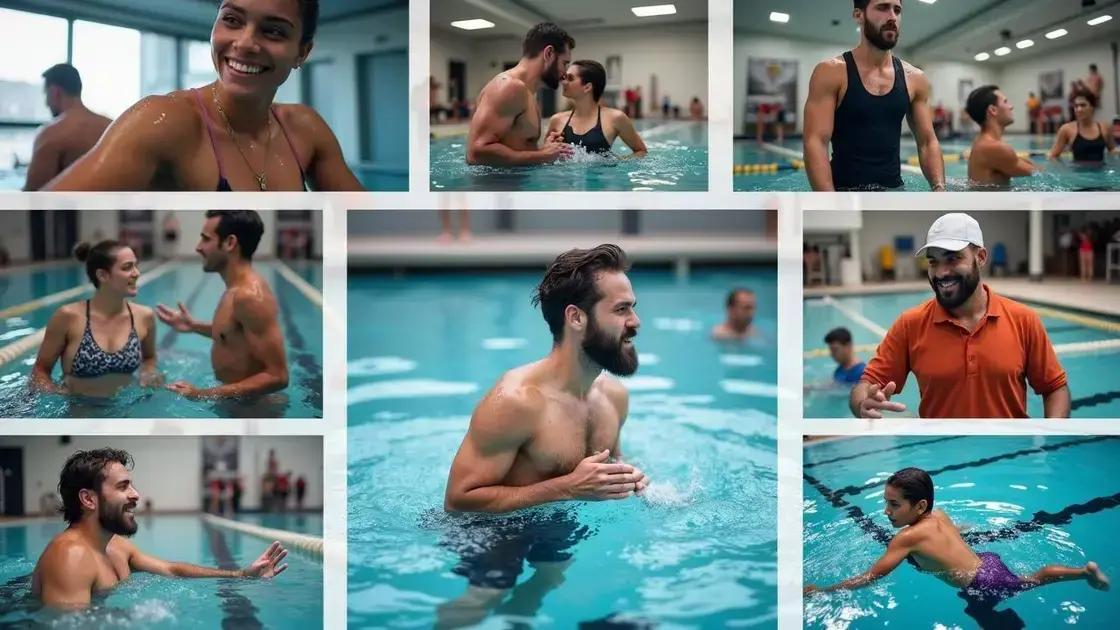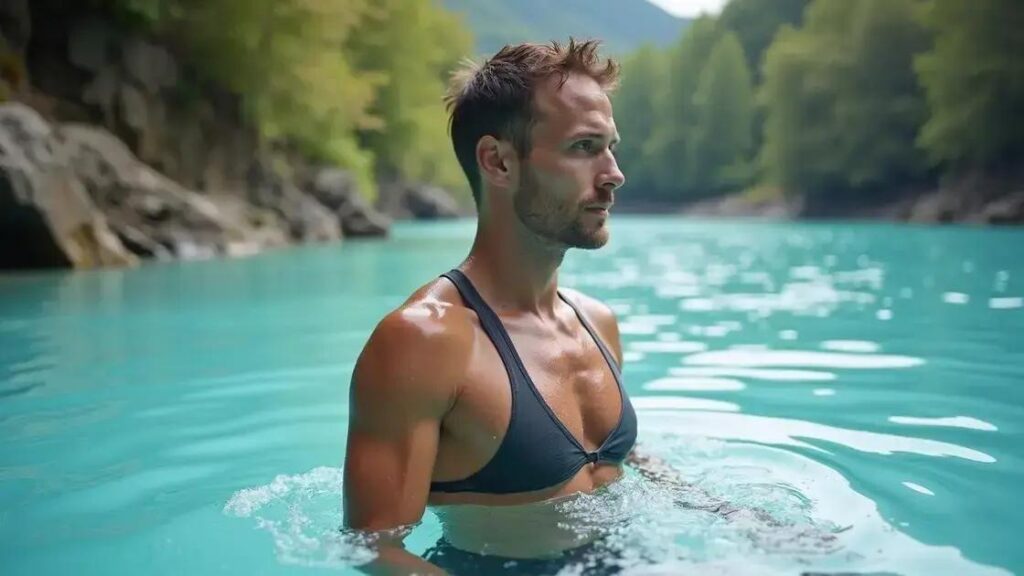The rise of cold water therapy in men’s fitness recovery offers significant benefits, including reduced muscle soreness, improved recovery time, and enhanced mental resilience. Techniques like cold showers, ice baths, and natural cold immersions are effective practices that athletes can incorporate into their routines for optimal recovery.
The rise of cold water therapy in men’s fitness recovery is changing how athletes approach their recovery routines. This innovative method offers unique benefits that enhance not only performance but also overall well-being. With increasing popularity among fitness enthusiasts, it’s crucial to understand what cold water therapy entails, its benefits for recovery, and how you can incorporate it into your routine. We’ll also share personal stories of individuals who have successfully embraced this practice.
Understanding Cold Water Therapy

Understanding cold water therapy involves recognizing its roots and principles. This practice has been used for centuries by various cultures to improve health and well-being. Cold water therapy often takes the form of cold showers, ice baths, or immersions in natural cold water sources. The main idea is to expose the body to cold temperatures to stimulate recovery and enhance physical and mental resilience.
How Cold Water Therapy Works
When the body is exposed to cold, it undergoes several physiological reactions. These can include activating the sympathetic nervous system, which can lead to increased heart rate and improved circulation. The cold exposure also helps in reducing inflammation and swelling, which are key elements in the recovery process. As the cold water hits the skin, blood vessels constrict (a process known as vasoconstriction), and this can lead to less soreness and faster healing.
The Science Behind Cold Water Therapy
Various studies suggest that cold water therapy can enhance athletic performance by reducing muscle soreness after intense workouts. This recovery method also helps release endorphins, which can elevate mood and provide a natural feeling of exhilaration. Overall, understanding the science behind cold water therapy allows individuals to harness its healing properties effectively.
Historical Context
Traditionally, cultures like the Scandinavians and Japanese have utilized cold water immersion as a form of rejuvenation and healing. Today, the rise of cold water therapy in Western fitness circles reflects a growing recognition of its benefits. As more athletes and fitness enthusiasts share their positive experiences, cold water therapy is becoming a mainstream recovery practice.
Benefits for Men’s Fitness Recovery

Cold water therapy offers several key benefits for men’s fitness recovery, making it an increasingly popular choice among athletes. These benefits can enhance both physical performance and mental well-being after intense workouts.
Reduces Muscle Soreness
One significant advantage of cold water therapy is its ability to reduce muscle soreness. Many athletes find that immersing themselves in cold water after exercise minimizes discomfort and speeds up the recovery process. This can allow them to train harder and more frequently.
Improves Recovery Time
Cold water therapy helps improve overall recovery time. By reducing inflammation through vasoconstriction, muscle healing is accelerated, enabling athletes to return to their routines quicker. This is especially helpful during training cycles.
Enhances Circulation
Exposure to cold can stimulate blood flow. When the body warms back up after cold water exposure, blood vessels dilate, leading to improved circulation. This enhanced blood flow helps deliver essential nutrients to muscles, which is critical for recovery.
Mental Resilience
Aside from physical benefits, cold water therapy can also strengthen mental resilience. Overcoming the shock of cold can foster a greater tolerance for discomfort, not only in workouts but also in daily life. This mental toughness can provide an edge in competitive sports.
How to Incorporate Cold Water Therapy

Incorporating cold water therapy into your fitness routine can be both simple and beneficial. Here are some practical tips on how to get started.
Start Slowly
If you’re new to cold water therapy, begin with short exposures. You can start with cold showers for about 30 seconds to a minute. Gradually increase the duration as your body adapts to the cold.
Ice Baths
For those ready to take it a step further, ice baths can be highly effective. Fill a tub with cold water and add ice cubes. Aim to stay immersed for 10-15 minutes. Ensure the water is cold but not uncomfortable.
Natural Water Sources
If you have access to lakes or rivers, swimming in natural cold water is an excellent alternative. Be sure to check the water temperature beforehand and consider safety precautions such as the buddy system.
Timing Matters
Timing your cold water therapy is important. It’s best to incorporate it right after an intense workout or physical activity. This way, you can maximize its benefits on your recovery process.
Consistency is Key
To see the best results, consistency is essential. Aim to incorporate cold water therapy into your routine a few times a week. Keeping a log of your sessions can help you track your progress.
Personal Stories of Recovery Success

Personal stories of recovery success highlight the real-life impact of cold water therapy on athletes and fitness enthusiasts. Here are some inspiring testimonials.
John’s Journey
John, an amateur triathlete, began using cold water therapy after experiencing severe muscle soreness post-races. After consistent cold water immersions, he noticed a dramatic reduction in recovery time. “I used to be sore for days. Now, I feel ready to train again much faster!” he says.
Mike’s Transformation
Mike, a weightlifter, credits ice baths for helping him break through training plateaus. After incorporating ice baths into his routine, he recovered faster between intense lifting sessions. “It was like magic. I got stronger faster and avoided injuries!” he shared.
Tom’s Mental Boost
Tom, a marathon runner, discovered that cold water therapy not only helped his muscles but also improved his mental resilience. “Facing the cold really prepared me for tough races. It’s a challenge I look forward to every week!” he mentions.
Group Success
A local gym started a cold water therapy program, and many members reported similar improvements in recovery and performance. Trainers have noted that participants display enhanced motivation and group support, which fosters a community of success. One member said, “We push each other, and it makes it more fun!”
The Impact of Cold Water Therapy on Men’s Fitness Recovery
The rise of cold water therapy has transformed recovery practices for many men in fitness. By understanding its principles and benefits, athletes can incorporate this effective therapy into their routines.
Real-life success stories illustrate the positive effects cold water therapy can have on reducing muscle soreness, improving recovery times, and enhancing mental resilience. Its simplicity and accessibility make it an appealing option for those looking to boost their fitness performance.
As more athletes embrace cold water therapy, it’s clear that this ancient practice is not just a trend but a valuable tool for modern fitness recovery.
FAQ – Frequently Asked Questions about Cold Water Therapy in Men’s Fitness Recovery
What is cold water therapy?
Cold water therapy involves exposing the body to cold temperatures, like ice baths or cold showers, to enhance recovery after exercise.
How does cold water therapy help with recovery?
Cold water therapy reduces muscle soreness, improves recovery time, enhances circulation, and boosts mental resilience.
How should I start incorporating cold water therapy into my routine?
Begin with short cold showers, then gradually increase the exposure time. You can also try ice baths and natural cold water sources.
How often should I use cold water therapy?
Aim to incorporate cold water therapy into your routine a few times a week, especially after intense workouts.
Are there any risks associated with cold water therapy?
While generally safe, individuals with certain medical conditions should consult a doctor before starting cold water therapy.
What are some personal success stories related to cold water therapy?
Many athletes report improved recovery times, reduced muscle soreness, and enhanced mental resilience after incorporating cold water therapy into their routines.












